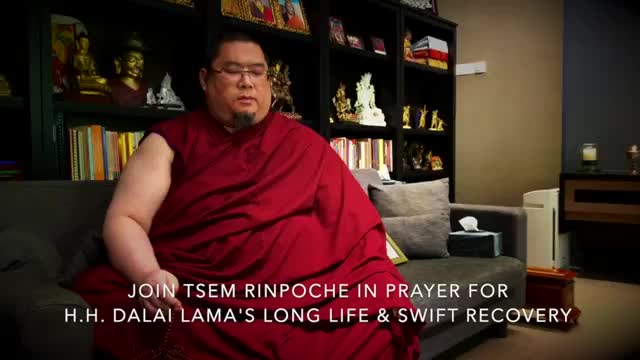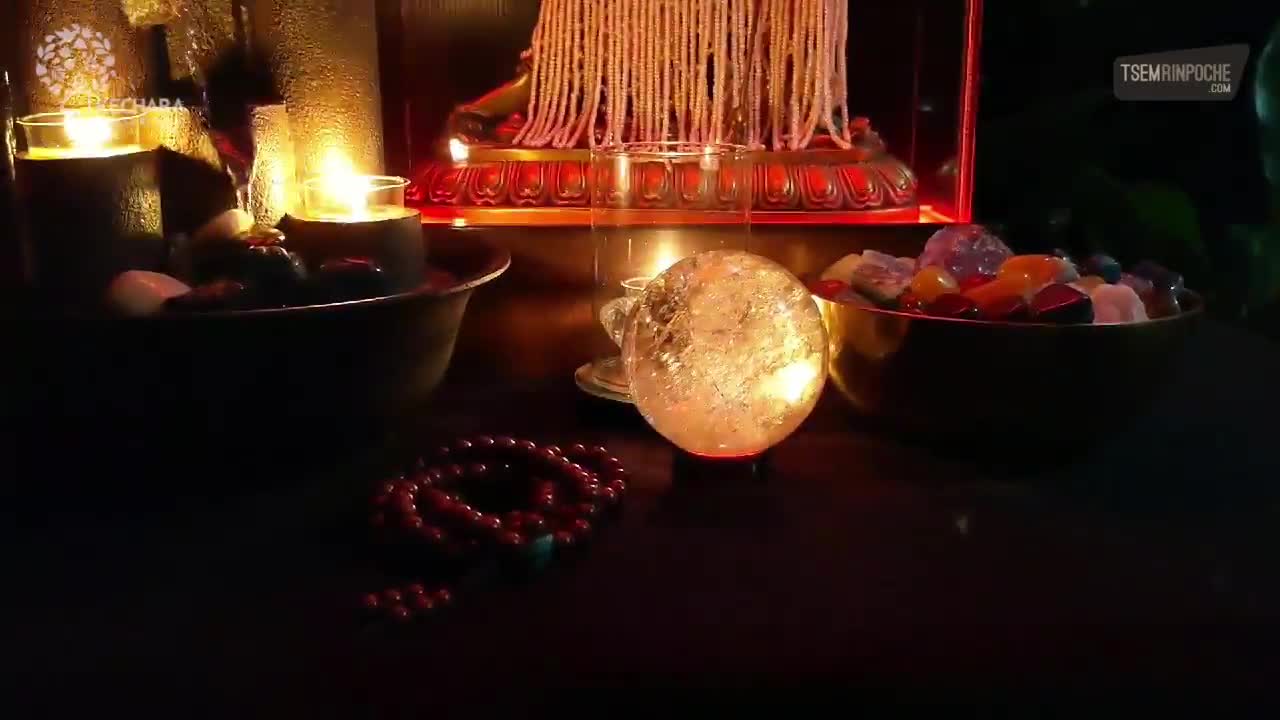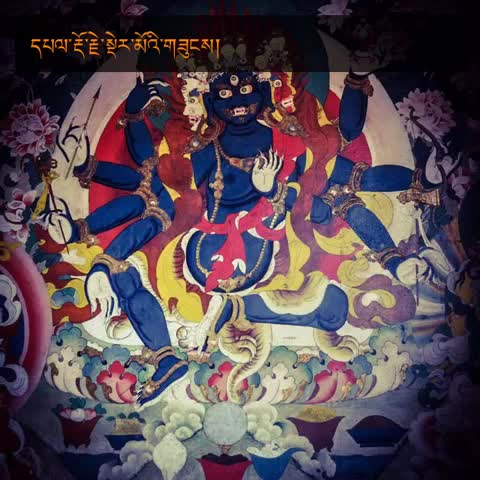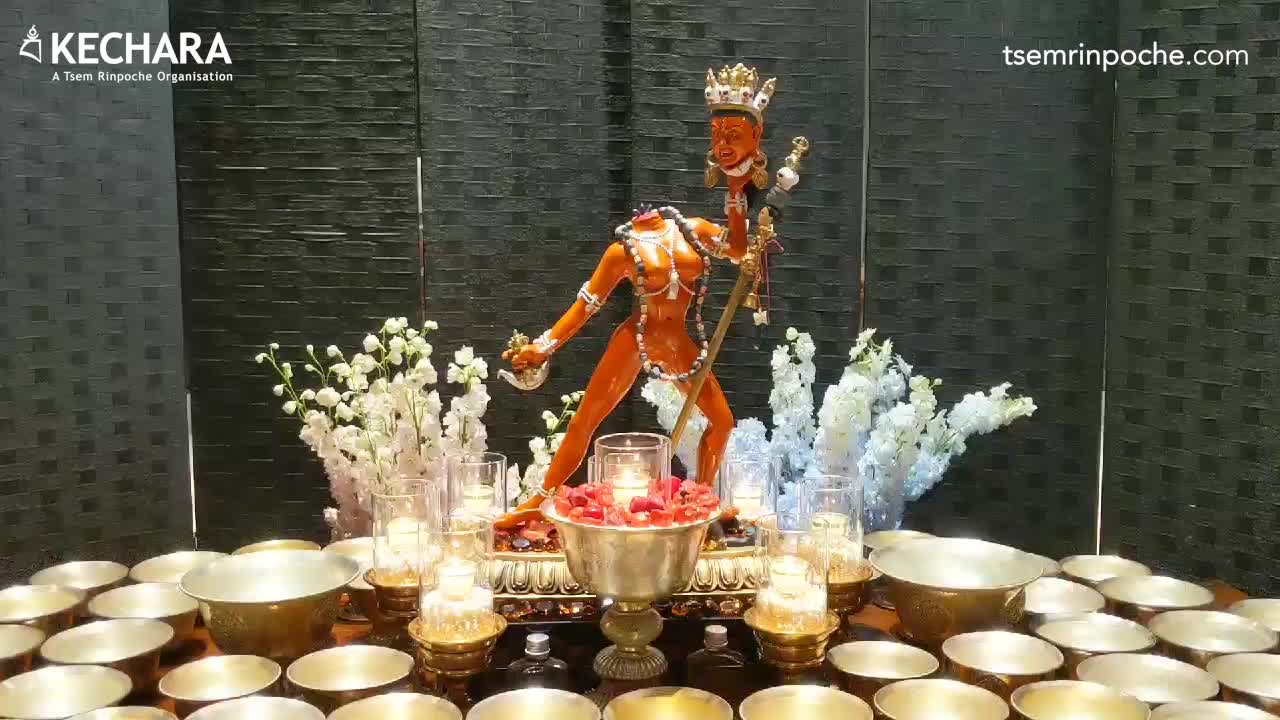Question asked by Johnny
Dear pastors,
I have a friend who is sick and upon hearing about Buddhist practices from others he asked me about them because he knows I do some kind of a daily practice.
So I introduced him to Om Mani Padme Hum and 35 Confessional Buddhas practice with the mantra recitation for Om Mani Padme Hum and visualization of Chenrezig and light rays of compassion emanating from Chenrezig to him.
Then for 35 Confessional Buddhas I taught him the recitation of the confessions combined with visualization of each Buddha.
But he says now he tries the visualization and he gets very frustrated. Like it just triggers the frustration when he needs to squeeze his brain. Maybe it is because of the weight of the illness I guess.
So he asked me whether he can just do verbal recitation of Om Mani Padme Hum without worrying about visualization and recitation for 35 Confessional Buddhas without the visualization. He wonders whether there will be zero effect or is it also a good practice?
Thank you for your advice!





































































































































































































































Dear Johnny,
Thank you for your question. I am sorry to hear that your friend is sick, but he is very lucky to have a friend like you who can share these immensely powerful practices with him. The aspect of visualisation can be very frustrating for beginners, especially with practices like the 35 Confessional Buddhas simply because there is so much visualisation involved.
Within Buddhism for a practice to be the most beneficial, one needs to engage what are known as the ‘three doors’ – these are one’s body, speech and mind. In order to engage the body, traditionally you sit in full lotus meditation posture, however this may not always be possible due to physical difficulties, especially is the person is suffering from illness. In this case, the best way to engage the body is to sit as comfortably but alert as possible in a quiet place, preferably in front of an altar or image of any of the enlightened beings. In order to engage the speech, one simply recites the prayers, and in order to engage the mind, one engages in the accompanying visualisations. However since your friend has difficulty visualising at the moment, he should just do the recitation. Even that in itself has great benefit. If appropriate your friend should get an image or statue of Chenrezig, and an image of the 35 Confessional Buddhas. You can find free downloadable pictures of deities here: https://www.tsemrinpoche.com/tsem-tulku-rinpoche/downloads/buddha-images.html. Ask you friend to find the picture(s) that are most attractive to him. He can focus on the image when reciting the prayers instead of visualising for now. The Buddhas operate from enlightened compassion, therefore if one has the correct motivation and is sincere, this creates a connection so that their energies can flow into our lives.
Visualisation itself is a form of meditation, and as with all forms of meditation, as the practice seeks to calm the mind, obstacles will arise. This is even more so when a person is sick, as you mentioned. I would like to suggest that your friend still continue reciting the mantras and prayers, but not to force the visualisation too much for now. It can be very difficult at first and one can only get used to through repeated effort and practice.
Instead, I would like to suggestion that your friend engage in the Nine Round Breathing Mediation before reciting the prayers. This will help calm your friends mind in general, and also help in your friend’s healing process as it helps to purify the body as well. I have include His Eminence the 25th Tsem Rinpoche’s instructions on the basic breathing meditation below. I hope this helps.
Thank you.
Basic Nine Round Breathing Meditation
Have your eyes either open a little bit or closed, whichever is better for you.
Relax your shoulders, have your hands on your lap with the right on top of the left; two thumbs touching; arms slightly away from your sides, hanging loosely by your sides.
Your mouth and jaw should be relaxed. Chine tucked in a little bit. Place the tongue on the roof of the mouth behind the upper teeth and breathe normally with a natural, steady rhythm.
Now let’s start the nine round breathing meditation.
Using your right hand, your right index finger blocks off the left nostril while you are breathing in through the right nostril.
Just let your breath come in slowly and steadily, pause for a moment, then block off the right nostril and breathe out the left nostril. Do this slowly and steadily three times, in through the right and out through the left.
Focus completely on the breathing, on the sensation of the nostrils as you are breathing in and out.
For the next three breaths keep your right nostril blocked and breathe in through the left and then move your finger to block off the left and breathe out through the right. So breath in through the left and out through the right, three times.
For the last three breaths bring your hands back to your lap and breathe through both nostrils evenly, slowly and gently.
Pause for a moment and then exhale through both nostrils, keeping your mind fully focused on the breath, on the sensations, as you breathe in and out. Continue to breath normally and bring into your mind a positive motivation for doing the meditation.
Think “I am going to do this meditation in order to work on my mind, to be a more positive, beneficial person for others, for the world. May this meditation bring more peace and happiness to others, to the world.’
Once you have generated a positive motivation bring your awareness back to your breathing and just be aware of each inhalation and exhalation of breath.
Let your attention ride or float on the breath similar to the way you would float on the surface of the ocean where there are gentle waves coming and going. Stay floating on the surface flowing with the wave, coming and going, flowing in and out, just let your attention rest or float on the gentle rolling rhythm of the breathing.
Now move your attention away from the breathing to the mind itself, that which is aware of breathing. In other words instead of being aware of the breath, which is the object of your mind, the object of your awareness, become aware of the mind itself, the awareness itself, that which is observing the breath, experiencing the breath.
The mind is like space or like sky, completely clear, not solid, and vast, spacious and unlimited. Try to get a sense of how your mind is like that, like this clear, vast and spacious sky.
The things that we are aware of, the thoughts, images, memories and so on, are similar to the clouds that pass through the sky, they’re not always there but they appear and after a while they disappear.
If there are thoughts appearing in your mind while you are sitting here doing this mediation, thoughts, memories, images, or if you hear sounds or feel sensations in your body, think that these are just like clouds, passing through this space or clear sky of your mind.
Let them come and let them go, realise that they are only momentary and not solid, they just come and go. Let them go and return your awareness to the mind itself, which is like the clear spacious sky. See if you can get a sense of identifying with this clear space-like nature of the mind. In other words feel, “this is the real me, this is my real nature, who I really am”.
Rather than identifying yourself with the temporary clouds of thoughts and emotions that passed through your mind, see if you can realise those as mental events, things that come and go in the mind.
They are not you and not who you really are. Let them go and identify with the clear space-like nature of your mind, your awareness, so that you are the sky, not the clouds.
Before opening your eyes mentally dedicate the merit or positive energy for doing this meditation. In the same way you motivated at the beginning, may this mediation be beneficial for others, may it bring greater peace, happiness, and benefit to other beings, to the world.
So dedicate the effort that you made and the positive energy you have created from doing the meditation to that goal.